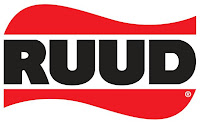Tuesday, December 1, 2009
Building Better Budgets
0 commentsOver the next few months, Comfort Supply will be running a series of articles on the subject of "Open Book Management (OBM)." With Open Book Management, every employee learns to understand the company's financials along with the other numbers that are critical to tracking the business's performance.
Click on this link to read an article from the HVAC news featuring Comfort Supply and O.B.M.
O.B.M. is something that is very important to Comfort Supply, because this is how we run our company. It has helped us be more successful, and we wholeheartedly endorse it for any company.
This is our budgeting season, which is a high-involvement planning process. Employees who have responsibility for various items on the financial statements participate in this process. Here are some tips for budgeting.
1. Build a true cost system. A true standard cost system reflects what you should be spending on specific items, and not simply what you shelled out for them last year. It's a critical budgeting step, and here's why: If you've been operating inefficiently by spending too much money, and this year you create a budget using last year's inflated cost, then you're simply flooding your system with more inefficient. Instead, you analyze every product or service.
2. Adopt a cost-conscious mentality. Every month, mangers at Critz Inc., an auto dealership, review composite financials published by the company's trade association. This discipline, practiced over time, has made budgeting easier and more accurate. Every year, managers make firm commitments to advertising, personnel, training and inventory. "If we plan to sell 70 cars a month , we'll need 130 in stock. So we factor in those opportunity costs, " explains president Dale Critz, Jr.
3. Avoid excessive detail at the outset. When beginning the budgeting process. Focus first on the high-impact expenses, the ones that matter most to company profitability. For many of our coaching clients, the Pareto wisdom prevails: 80% of their issues are found in 20% of their line items. However, once you get into the budgeting groove, you can and should sweat the small stuff.
4. Break down expenses into useful, controllable items. Allocating more expenses to departments generally encourages autonomy. Make sure employee salaries and expenses land in the right departmental budget, and show people how those numbers vary. If you run a sales organization, keep an eye on travel, entertainment and selling expenses. If run a consulting firm, dig into those billable hours. You want to develop a simple , descriptive income statement that helps employees immediately understand the effects of what they do every day.
5. Use "other " line items strategically. "We're in the service business," says the owner of an open book health club.' If a member get a flat tire in the parking lot, I don't want to hurt any one's budget." The solution: A staffer fills in a "member give back" form which a special payout will be warranted, and the cost comes out of a particular budget line. Also, before you lump together small expenses, have a good feel for the historical trends of the individual items.
6. Build the budget collaboratively-and commit to it. In October, teams receive a refined sales forecast, and they spend six weeks filling in expenses. They consider industry norms, planned price changes and all the "what-ifs". They set reasonable expense targets and plug them into a spreadsheet to see what they look like. From there, it's refine, refine, refine. Once teams have cost projections they can live with for the next twelve months, they commit to them by signing their budgets.
7. Develop an easy-to-understand P&L. Southwest Airlines pioneered it, and many other open book companies have adopted it: the simple, illustrated, single page (doubled-sided) P&L handout that summarizes in everyday language what each line refers to. It provides employees. especially new ones, with a cheat sheet explaining items they may not fully understand. Preparing the handout (and a scoreboard) takes an afternoon, tops. Why not do the same with your balance sheet and cash flow statement.






